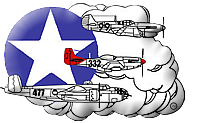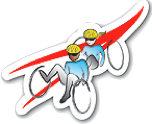 The deadline for nominations is April 1, 2013. The nomination form should be completed early enough to ensure that the nominated teacher is given enough time to thoroughly prepare an application that reflects exemplary teaching prior to the application deadline. Applications are due by May 1, 2013.
The deadline for nominations is April 1, 2013. The nomination form should be completed early enough to ensure that the nominated teacher is given enough time to thoroughly prepare an application that reflects exemplary teaching prior to the application deadline. Applications are due by May 1, 2013.
Nominate outstanding secondary, grades 7-12 mathematics and science (including computer science) teachers now for the 2013 awards.
The Presidential Awards for Excellence in Mathematics and Science Teaching (PAEMST) are the highest honors bestowed by the United States government specifically for K-12 mathematics and science (including computer science) teaching. Established by Congress in 1983, the PAEMST program authorizes the President to bestow up to 108 awards each year.
Awards are given to mathematics and science (including computer science) teachers from each of the 50 states and four U.S. jurisdictions. The jurisdictions are Washington, D.C.; Puerto Rico; Department of Defense Education Activity schools; and the U.S. territories as a group (American Samoa, Guam, the Commonwealth of the Northern Mariana Islands, and the U.S. Virgin Islands).
The award recognizes those teachers who develop and implement a high-quality instructional program that is informed by content knowledge and enhances student learning. Since the program’s inception, more than 4,200 teachers have been recognized for their contributions in the classroom and to their profession.
Awardees serve as models for their colleagues, inspiration to their communities, and leaders in the improvement of mathematics and science (including computer science) education. The National Science Foundation administers PAEMST on behalf of The White House Office of Science and Technology Policy.
Visit the Presidential Awards website for additional information, to nominate someone, or to apply.

 If you are using the NASA Explorer Schools featured lesson Engineering Design: Forces and Motion — Balloon Aerodynamics Challenge, you may extend the lesson’s relevancy by introducing your students to NASA’s Super-TIGER balloon.
If you are using the NASA Explorer Schools featured lesson Engineering Design: Forces and Motion — Balloon Aerodynamics Challenge, you may extend the lesson’s relevancy by introducing your students to NASA’s Super-TIGER balloon.
 Connect with NASA’s Digital Learning Network, and let your students explore history and science with NASA and Tuskegee. On Feb. 20, from 2-3 p.m. EST, your students will have a chance to discuss the early frontiers of aviation with a contrail scientist and a pilot who is president of the Howard Baugh Chapter-Tuskegee in Petersburg, Va.
Connect with NASA’s Digital Learning Network, and let your students explore history and science with NASA and Tuskegee. On Feb. 20, from 2-3 p.m. EST, your students will have a chance to discuss the early frontiers of aviation with a contrail scientist and a pilot who is president of the Howard Baugh Chapter-Tuskegee in Petersburg, Va. The deadline for nominations is April 1, 2013. The nomination form should be completed early enough to ensure that the nominated teacher is given enough time to thoroughly prepare an application that reflects exemplary teaching prior to the application deadline. Applications are due by May 1, 2013.
The deadline for nominations is April 1, 2013. The nomination form should be completed early enough to ensure that the nominated teacher is given enough time to thoroughly prepare an application that reflects exemplary teaching prior to the application deadline. Applications are due by May 1, 2013. Registration is open for the 20th Annual NASA Great Moonbuggy Race. High school and college students are challenged to design and build a vehicle that addresses a series of engineering problems similar to those faced by the original lunar-roving vehicle team. Each school may enter up to two teams. The race will take place April 25-27, 2013, in Huntsville, Ala., at the U.S. Space & Rocket Center.
Registration is open for the 20th Annual NASA Great Moonbuggy Race. High school and college students are challenged to design and build a vehicle that addresses a series of engineering problems similar to those faced by the original lunar-roving vehicle team. Each school may enter up to two teams. The race will take place April 25-27, 2013, in Huntsville, Ala., at the U.S. Space & Rocket Center.